JACQUES SCHWARZ-BART / “Jacques Schwarz-Bart Mixtape”
 Saxophonist/composer Jacques Schwarz-Bart is from Guadaloupe in the Caribbean. His major musical interest initially was in jazz and Guadaloupian musical folk forms such as Gwoka. But one thing led to another and he ended up seduced by the funk. He toured with D’Angelo, performed with Erykah Badu among many others, and ended up as a mainstay in the Roy Hargrove RH band as well as a member of Hargrove’s Latin-oriented Creole band.
How deep was he in the Hargrove camp? Well, the lead single for Hargrove’s popular Hard Groove album was a Schwarz-Bart song, “Forget Regret” on which his now wife Stephanie McKay sang the lead. I don’t actually know when Jacques and Stephanie hooked up but I do know they are team now and Roy has a ton of respect for Jacques’ talent and the contributions Schwarz-Bart made to Hargrove’s music.
Saxophonist/composer Jacques Schwarz-Bart is from Guadaloupe in the Caribbean. His major musical interest initially was in jazz and Guadaloupian musical folk forms such as Gwoka. But one thing led to another and he ended up seduced by the funk. He toured with D’Angelo, performed with Erykah Badu among many others, and ended up as a mainstay in the Roy Hargrove RH band as well as a member of Hargrove’s Latin-oriented Creole band.
How deep was he in the Hargrove camp? Well, the lead single for Hargrove’s popular Hard Groove album was a Schwarz-Bart song, “Forget Regret” on which his now wife Stephanie McKay sang the lead. I don’t actually know when Jacques and Stephanie hooked up but I do know they are team now and Roy has a ton of respect for Jacques’ talent and the contributions Schwarz-Bart made to Hargrove’s music.
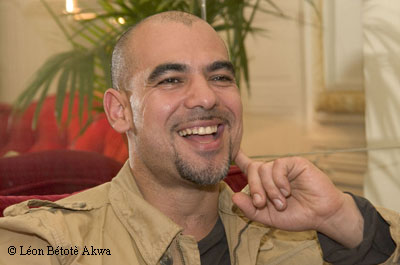 Jacques has four albums and they accurately map the arc of his career and the stylistic emphasis he evidenced over the years. The first album is clearly a jazz album, from the repertoire to the orientation of the band. At the same time that it’s straight ahead jazz, you can hear the Caribbean influences not just in the rhythms but in his whole approach to the jazz standards.
Jacques plays jazz but he plays the music in his own way. What Jacques does with Coltrane’s “Impressions” is impressive. The song, which is a Coltrane variation on Miles’ “So What,” is reconfigured not to the point that you don’t recognize it but rather to the point that you recognize both the familiar melody as well as the unique arrangement. This is not simply difference for difference sake.
Jacques has four albums and they accurately map the arc of his career and the stylistic emphasis he evidenced over the years. The first album is clearly a jazz album, from the repertoire to the orientation of the band. At the same time that it’s straight ahead jazz, you can hear the Caribbean influences not just in the rhythms but in his whole approach to the jazz standards.
Jacques plays jazz but he plays the music in his own way. What Jacques does with Coltrane’s “Impressions” is impressive. The song, which is a Coltrane variation on Miles’ “So What,” is reconfigured not to the point that you don’t recognize it but rather to the point that you recognize both the familiar melody as well as the unique arrangement. This is not simply difference for difference sake.
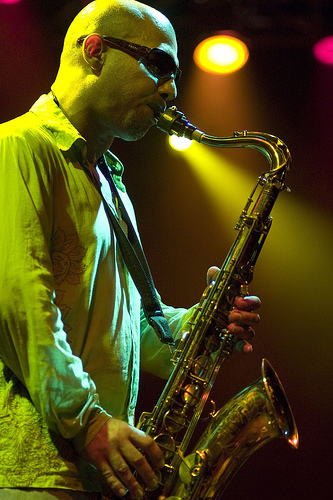 Schwarz-Bart is determined to have it both ways. Jacques looks outward for what’s happening and looks inward to put his own mark on what’s happening.
The second album, Sone Ka La, wears its orientation on the jacket sleeve. Just from the name you know this is coming to be different and Schwarz-Bart doesn’t disappoint. Jacques does not only use traditional Guadaloupian Gwoka rhythms, most of the lyrics are in the creole language of the people of Guadaloupe, including poetry.
The final track from Sone Ka La is a hidden track—that’s from the habit of putting a track after seconds, or even a full minute of silence, usually but not always on the last track on a release. I think “hidden” tracks should be fully credited and sequenced like all the other tracks but I also believe to each their own. In any case the hidden track hints at the funk to come as exemplified by a solid backbeat.
The heavy hit, usually on the fourth beat in a measure, is what is commonly called the backbeat. The backbeat is a distinctive feature of African American music and music greatly influenced by African American music, which is a chauvinistic use of semantics that implies that African American applies specifically to the United States and forgetting or disregarding that everywhere else in the Western Hemisphere is also “America.”
Moreover, jazz is mostly identified as an instrumental music and the various popular music forms as featuring a vocalist. Although this distinction is only partially true, that’s the way most people think of the music. With his third album Jacques Schwarz-Bart put together a mostly instrumental outing that was jazz oriented in terms of the saxophone playing but that clearly retained the Guadaloupian folk feel. Abyss is a successful hybrid that could easily have been the highpoint of Schwarz-Bart’s recording output if he had not followed up with the outstanding Rise Above.
Schwarz-Bart is determined to have it both ways. Jacques looks outward for what’s happening and looks inward to put his own mark on what’s happening.
The second album, Sone Ka La, wears its orientation on the jacket sleeve. Just from the name you know this is coming to be different and Schwarz-Bart doesn’t disappoint. Jacques does not only use traditional Guadaloupian Gwoka rhythms, most of the lyrics are in the creole language of the people of Guadaloupe, including poetry.
The final track from Sone Ka La is a hidden track—that’s from the habit of putting a track after seconds, or even a full minute of silence, usually but not always on the last track on a release. I think “hidden” tracks should be fully credited and sequenced like all the other tracks but I also believe to each their own. In any case the hidden track hints at the funk to come as exemplified by a solid backbeat.
The heavy hit, usually on the fourth beat in a measure, is what is commonly called the backbeat. The backbeat is a distinctive feature of African American music and music greatly influenced by African American music, which is a chauvinistic use of semantics that implies that African American applies specifically to the United States and forgetting or disregarding that everywhere else in the Western Hemisphere is also “America.”
Moreover, jazz is mostly identified as an instrumental music and the various popular music forms as featuring a vocalist. Although this distinction is only partially true, that’s the way most people think of the music. With his third album Jacques Schwarz-Bart put together a mostly instrumental outing that was jazz oriented in terms of the saxophone playing but that clearly retained the Guadaloupian folk feel. Abyss is a successful hybrid that could easily have been the highpoint of Schwarz-Bart’s recording output if he had not followed up with the outstanding Rise Above.
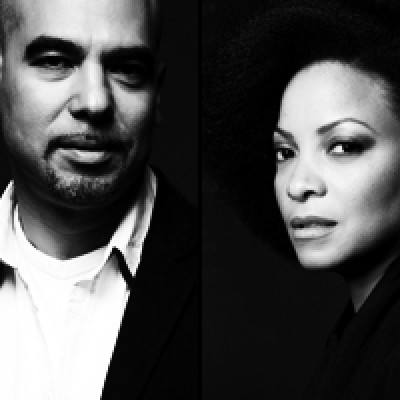 Whereas Jacques had chanted and talk-sung discreetly on Abyss, on Rise Above he presents himself as a vocalist with no pretensions to be a lead vocalist. What Jacques does is closer to lyrical narration. Certainly his partner Stephanie McKay is the vocal talent of the tandem. She easily negotiates tricky phrasing and difficult note-choices with both poise and passion. Her sound is warm without being clichéd or mannered, i.e. she’s not trying to sound like a soul singer, instead she is being herself even as she embraces musical forms that are extensions of or related forms to the music with which she grew up.
So that’s the first and most obvious strength of Rise Above: the lead vocals are on the money. A lot of times, especially when hardcore jazz musicians try to make pop albums they sound like they are playing around rather than seriously playing the music form. I remember talking to Branford Marsalis and listening to explain some of the differences he believed between the two music forms, not the least of which was that R&B required shorter musical phrases in the solos than did jazz solos.
If you compare the way Schwarz-Bart plays on the opening selections from his appropriately titled debut album, Immersion to the way he plays on Rise Above, it’s easy to hear and agree with Branford’s insight. I think part of it is due to the fact that popular music, especially contemporary pop, employs less harmonic changes. In any case, Schwarz-Bart has put together a strong album that manages to be both jazz and pop, both African American and Guadaloupian.
“Rainbow” is a major exhibition of Schwarz-Bart’s saxophone in the popular vein. He is as expert at stringing together short, attention-getting bursts of notes that explode atop the hard beats. But what makes this record work is that there is far more than a saxophone supporting by beats.
Whereas Jacques had chanted and talk-sung discreetly on Abyss, on Rise Above he presents himself as a vocalist with no pretensions to be a lead vocalist. What Jacques does is closer to lyrical narration. Certainly his partner Stephanie McKay is the vocal talent of the tandem. She easily negotiates tricky phrasing and difficult note-choices with both poise and passion. Her sound is warm without being clichéd or mannered, i.e. she’s not trying to sound like a soul singer, instead she is being herself even as she embraces musical forms that are extensions of or related forms to the music with which she grew up.
So that’s the first and most obvious strength of Rise Above: the lead vocals are on the money. A lot of times, especially when hardcore jazz musicians try to make pop albums they sound like they are playing around rather than seriously playing the music form. I remember talking to Branford Marsalis and listening to explain some of the differences he believed between the two music forms, not the least of which was that R&B required shorter musical phrases in the solos than did jazz solos.
If you compare the way Schwarz-Bart plays on the opening selections from his appropriately titled debut album, Immersion to the way he plays on Rise Above, it’s easy to hear and agree with Branford’s insight. I think part of it is due to the fact that popular music, especially contemporary pop, employs less harmonic changes. In any case, Schwarz-Bart has put together a strong album that manages to be both jazz and pop, both African American and Guadaloupian.
“Rainbow” is a major exhibition of Schwarz-Bart’s saxophone in the popular vein. He is as expert at stringing together short, attention-getting bursts of notes that explode atop the hard beats. But what makes this record work is that there is far more than a saxophone supporting by beats.
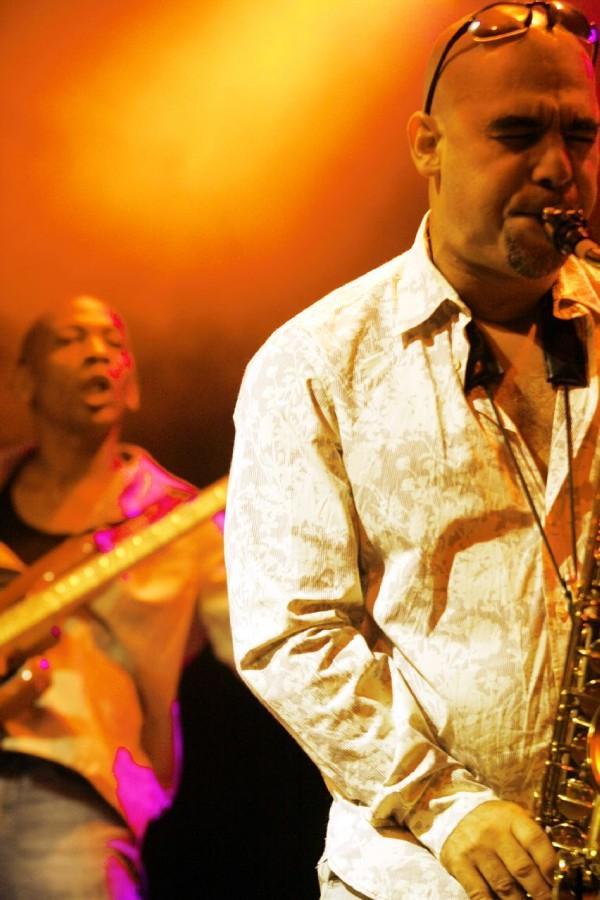 I really like how Jacques has layered the voices throughout Rise Above. There is Stephanie’s lead voice, Jacques’ narrative, and Jacques’ saxophone plus overdubs of each riding atop hip hop solid rhythms. While I miss the extended saxophone solos, I do enjoy the gumbo of voices. Rise Above is an important addition to the body of contemporary music. Rather than simply a variation of what already exists, this is a distinctive and easily identifiable addition to new directions for contemporary music.
Plus, the songs themselves are quality in their structure, their arrangement, and the lead vocals of Stephanie McKay. And the production is superb, the sound is crisp and clear, you can distinctly hear the different threads in this sonic tapestry. Whoever did the mixing deserves deep kudos. This is what American music ought to sound like, obviously part of a large whole but also obviously a unique part, in this case a Guadaloupian part.
I don’t know if Jacques was trying to put Guadaloupe on the musical map but for sure he has succeeded.
—Kalamu ya Salaam
Jacques Schwarz-Bart Mixtape Playlist
I really like how Jacques has layered the voices throughout Rise Above. There is Stephanie’s lead voice, Jacques’ narrative, and Jacques’ saxophone plus overdubs of each riding atop hip hop solid rhythms. While I miss the extended saxophone solos, I do enjoy the gumbo of voices. Rise Above is an important addition to the body of contemporary music. Rather than simply a variation of what already exists, this is a distinctive and easily identifiable addition to new directions for contemporary music.
Plus, the songs themselves are quality in their structure, their arrangement, and the lead vocals of Stephanie McKay. And the production is superb, the sound is crisp and clear, you can distinctly hear the different threads in this sonic tapestry. Whoever did the mixing deserves deep kudos. This is what American music ought to sound like, obviously part of a large whole but also obviously a unique part, in this case a Guadaloupian part.
I don’t know if Jacques was trying to put Guadaloupe on the musical map but for sure he has succeeded.
—Kalamu ya Salaam
Jacques Schwarz-Bart Mixtape Playlist
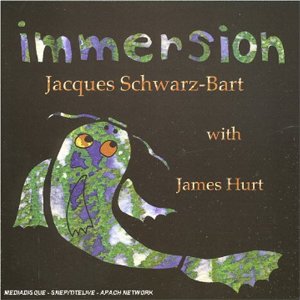 Immersion
01 “Invitation”
02 “Blue In Green”
03 “Impressions”
04 “Lament”
Immersion
01 “Invitation”
02 “Blue In Green”
03 “Impressions”
04 “Lament”
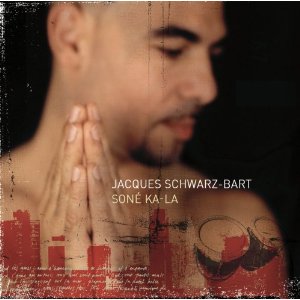 Sone Ka La
05 “Papale”
06 “Love”
07 “Ascent”
08 “Lewoz”
Sone Ka La
05 “Papale”
06 “Love”
07 “Ascent”
08 “Lewoz”
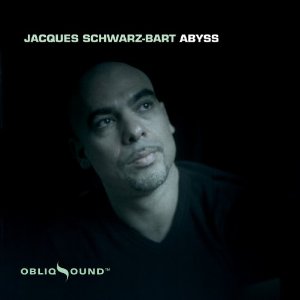 Abyss
09 “Simone”
10 “André”
11 “Abyss”
12 “Nubian”
Abyss
09 “Simone”
10 “André”
11 “Abyss”
12 “Nubian”
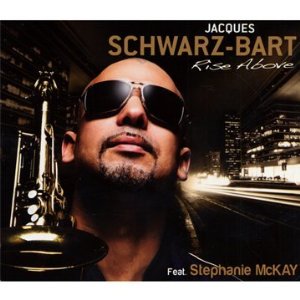 Rise Above
13 “Feel So Free”
14 “Forget Regret”
15 “Rainbow”
16 “I Don't Know”
Rise Above
13 “Feel So Free”
14 “Forget Regret”
15 “Rainbow”
16 “I Don't Know”
This entry was posted on Monday, July 19th, 2010 at 4:09 am and is filed under Contemporary. You can follow any responses to this entry through the RSS 2.0 feed. You can leave a response, or trackback from your own site.
Leave a Reply
| top |